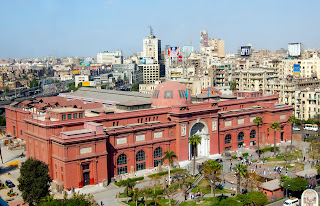Ismailia
is a city in north-east Egypt. Known in Egypt as "The City of Beauty and Enchantment".
Ismaïlia is situated on the west bank of the Suez Canal, it is the capital of the Ismailia Governorate
The city has a population (including surrounding rural areas) of approximately 750,000 inhabitants
The Canal widens at that point to include Lake Timsah, one of the Bitter Lakes linked by the Canal.
Ismaïlia was founded in 1863, during the construction of the Suez Canal, by Khedive Ismail the Magnificent, after whom the city is named.
The head office of the Suez Canal Authority is located in Ismaïlia at the shore of Lake Timsah. It still has a large number of buildings dating from British and French involvement with the Canal. Most of these buildings are still used by Canal employees and officials.

.jpg)






















